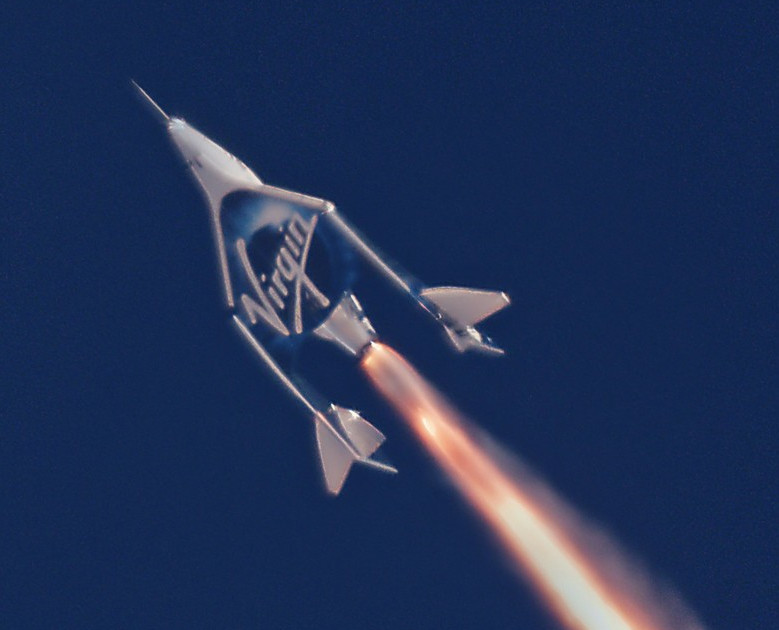
Virgin Galactic SpaceShipTwo Reaches 'Space' For The First Time
Virgin Galactic has just reached one of the biggest milestones in its history – its first test flight to space.
VSS Unity, the company's space plane, took off in the early morning December 13 from the Mojave Air and Space Port in California. The space plance was carried into the air by a larger aircraft called WhiteKnightTwo, or VMS Eve.
At about 13,000 meters (43,000 feet) in altitude, VSS Unity was dropped from its mothership, when it powered on its rocket motor and soon reached a supersonic speed of Mach 2.9. Just a minute later, it reached the highest point of its flight – 82.7 kilometers (51.4 miles) above the surface of Earth – reaching for the first time what the company considers the boundary of space. Then, the space plane safely re-entered Earth’s atmosphere. VSS Unity returned to the runway at 8.14am local time, with the flight from the drop to the landing lasting 14 minutes in total.

The VSS Unity's previous maximum altitude, on July 26, 2018, reached a height of 52 kilometers (32 miles), with a previous top speed record of Mach 2.4.
VSS Unity was built by Virgin Galactic’s sister company, The Spaceship Company. The aircraft is powered by a hybrid rocket motor, using both solid and liquid rocket engines.
Virgin Galactic's development of its spaceship took far longer than expected and endured a setback when the first experimental craft broke apart during a 2014 test flight, killing the co-pilot.
Virgin hopes that future flights will have up to six paying customers ($250,000 a ticket) onboard. When VSS Unity makes these flights in future, it will target up to six minutes in microgravity, with the passengers able to get out of their seats and float around.
During descent, the craft's twin tails are designed to rotate upward to slow it down, then return to a normal flying configuration before the craft glides to a landing on a runway.
Virgin Galactic isn't alone in the space tourism business: Jeff Bezos' Blue Origin is planning to take space tourists on trips, using the more traditional method of a capsule atop a rocket that blasts off from a launch pad. SpaceX's Elon Musk recently announced plans to take a wealthy Japanese entrepreneur and his friends on a trip around the moon.















